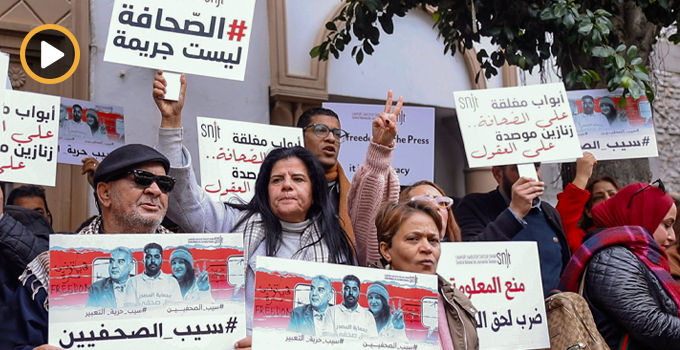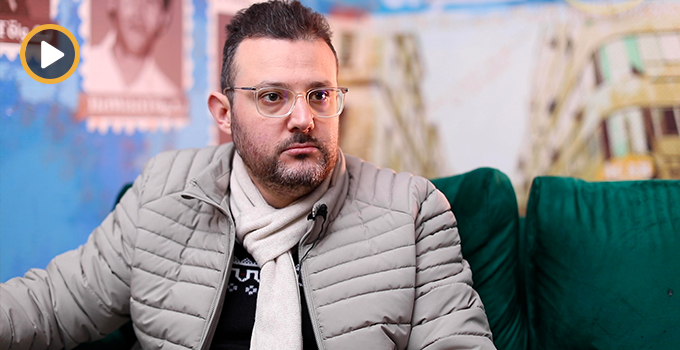Digital activism has been construed as its own movement, a new wave of organizing unique to the 21st century digital world. In fact, digital tools are complementary to “traditional” activism, for a number of reasons: They allow organizers to quickly mobilize large numbers of people; they help draw media attention to causes, and quickly; they allow for a centralized portal of information. But by drawing a distinct line between “traditional” and “digital” (or online and offline, if you prefer) activism, pundits and journalists are doing a disservice to both the utility of digital tools and to the resilience of traditional advocacy.
“Offline versus Online” are False Poles
Renowned writer Malcolm Gladwell, in this week’s New Yorker, argues that the “weak ties” of “digital activism” cannot remotely compare to the strong ties of traditional activism, using the American Civil Rights movement as a baseline. To the former point, he gives examples of the much-touted “Twitter revolutions” in both Moldova and Iran, noting that it was Western media that quickly claimed success for the two movements, ignoring local views. To this point, he quotes Iranian commentator Golnaz Esfandiari, who stated in Foreign Policy at the end of last summer: “Simply put: There was no Twitter Revolution inside Iran.”
Gladwell is correct: Western pundits, quick to look for a story (and in some cases, quick to hope for the overturning of a regime), jumped on Twitter as a revolutionary tool, loudly beating the drum that Twitter had revolutionized revolutions. From Andrew Sullivan (“The Revolution will be Twittered“) to lawyer and pundit Lily Mazahery, who at a conference went as far as to say that, without Twitter, Iranians never would’ve been able to get information out to the world (um, e-mail?), to the State Department, which infamously requested Twitter postpone scheduled maintenance to allow the Iranians to keep tweeting, Twitter was quickly deemed a lifesaver.
With that in mind, Gladwell’s delineation between the “strong ties” of activism past and the “weak ties” of the digital age is problematic. Ignoring the utility of social media and other digital tools (including mobile ones), Gladwell argues that “[digital activism] is simply a form of organizing which favors the weak-tie connections that give us access to information over the strong-tie connections that help us persevere in the face of danger.”
While it’s true that the framing we so often see (“digital” versus “traditional” activism) is highly problematic, traditional activism is indeed enhanced by digital tools (sometimes greatly), while solely digital activities can be hampered by weak ties. Digiactive.org co-founder Mary Joyce suggested the example of “Save Darfur” Facebook groups as a “weak tie” example of online activism, and I don’t agree. But the precedent for such groups is perhaps the handing out of green “Save Darfur” bracelets, a phenomenon that occurred in the early 2000s, shortly after Lance Armstrong’s LiveStrong bracelets made waves. Bracelets aren’t a method for making change, but they certainly draw attention to a cause.
Campaigns such as these, as well as the use of Twitter during the Iranian elections, seem to serve two primary purposes: drawing attention to the cause, and mobilizing the masses to make a small effort. The use of Twitter and Facebook for any kind of activism seems to serve those purposes, in fact. But how is that different from the mass mobilization involved in traditional activism? As Gladwell points out, the civil rights movement had a “strong tie” core of people dedicated to their cause. But surely not every single person who attended a march on the Mall had a strong tie to the movement! Marches, a solidly traditional form of activism, did not involve only the hard core of activists, but also the outliers: folks who cared but were only up for one-time involvement. Letter-writing campaigns present a similar argument.
And while Gladwell might argue that such one-time involvement is still a great risk to the individual (surely it is, as people were arrested, shot at), I would argue that, in the most repressive of societies, digital involvement (be it long-term or one-time) can present similar peripheral risks. It is not always the most serious and outspoken bloggers who get arrested for their activism, as we have seen, but sometimes the outliers, in the wrong place at the wrong time (see: Mohammed Erraji). Often such circumstances a stronger activist makes, but that’s a point for another time.
The problem with Gladwell’s piece, then, is not his pessimism about the popular media line on digital activism, but rather, the choice he makes to ignore the utility of digital tools for “real-world activism.” Or as Alaa Abd El Fattah points out: “it’s not like “real world” activists are going to abstain from using the net to prove their analogness.”
In other words, “Digital activism” alone is fairly useless, but the utilization of digital tools can make traditional activism infinitely stronger.
Certain Support Ensures Weak Ties
In a recent blog post-turned-Al Jazeera op-ed, Sami Ben Gharbia makes the point (among several other points), that the U.S. government and some of the organizations it funds are “gatecrashing ‘netroots activism”. His argument is that, as Western heads turn to the already-existing sphere of activists in the Arab world and attempt involvement (due to a variety of factors, not least of which is massive government funding initiatives), they are wont to misunderstand and thus get involved in potentially dangerous ways, thus upsetting the existing ecosystem.
Ben Gharbia argues that “we urgently need to resist every governmental attempt to hijack or politicise our space, publicly denounce it and make sure that we are making informed decisions, rather than naively accepting ideologically tinted internet freedom funding and support.”
Though I don’t entirely agree that activists elsewhere should entirely reject funding (after all, if the better ones do, then the lesser ones get it–the funding isn’t going to simply disappear, and who’s to say you can’t denounce while engaging), I think he makes an important point. The U.S. “net freedom” agenda relies heavily on a particular narrative of democracy and regime change that favors certain governments (Iran, China) over others (Tunisia, Syria), regardless of the existing levels of repression in such places, due to various political reasons. Thus, it seeks to reason that a number of organizations that receive USG funding are duly influenced by that narrative. Ben Gharbia has done a good job of illustrating this, so I digress.
I would argue that one of the most problematic results of this narrative and the funding and work that goes along with it is who it targets. Looking at recent conferences and workshops to which I’ve been a party, I’ve noticed an ongoing theme: Where the workshop or conference is funded largely or in part by U.S. organizations, a certain demographic of activist–let’s call them “troublemakers”–are largely absent. Whether this is by choice or by exclusion, I couldn’t say, and I would wager it’s a combination of the two, but it is nevertheless frustrating to see. USG-funded organizations are rarely unpolicitized, thus it makes sense that they would exclude to a degree those who aren’t willing to abide by the narrow American narrative of freedom (for example, excluding democracy activists who don’t outright condemn Hamas). But just as such notions don’t work in the MidEast peace talks, neither will they in activist circles.
Tied to that is Gladwell’s argument of “weak ties”: “Non-native,” outsider movements that seek to bring together activists around a particular network or cause are, or are at least sometimes seen as, disingenuous. Bringing a group of people together in the attempt to influence a certain line of thinking (or even to “whiten up” an existing one) doesn’t work. You simply can’t build a movement from the top down.
Building a New Narrative
Ben Gharbia challenges the prevailing dialogue around digital activism, arguing that: “For digital activism in the Arab world to achieve its noble aspirations, it must remain independent and homegrown, tapping its financial, logistic and moral support into its grassroots, seeking support from neutral parties that do not push for any kind of political or ideological agenda.” For some, this means creating a new narrative, outside of that which exists in the mainstream discourse, by and for existing activists.
While I agree with the importance of such a narrative, I’m still tempted to ask: Is there any room at all for U.S. funding? I certainly take (strong) issue with the manner in which the U.S. net freedom narrative is being sold and deployed, but as an American citizen who straddles the line of two worlds at times, one thing concerns me: The USG is going to do what it’s going to do. It will continue to claim lofty goals for the promotion of Internet freedom, regardless of how hypocritical the deployment of such goals may be. Therefore, is it better for activists to work outside the existing structures to build their own narrative, or is there any room for working within existing framework, to challenge the power structures and the status quo in the hopes of influencing how decisions are made and money spent?
Furthermore, what can we, as U.S. citizens, do to challenge the existing narrative and create a better one that is concerned with actually “exporting freedom” to all of those who are being stifled?
These are open questions, and I invite you to join in the dialogue.





Hi, I’m the best user in the world!